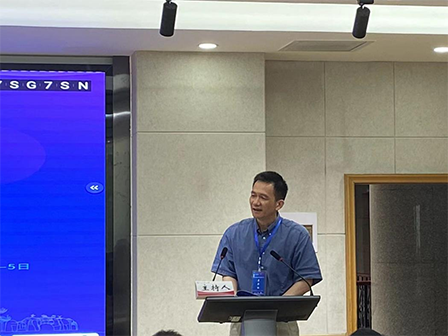看看博弈论如何分析讨价还价
观点 · 2003-02-20 00:00
返回------------------------------------------ Section (I) Introduction ------------------------------------------ We are going to review three questions: (i) How to model bargaining(讨价还价) using game theoretical ...
------------------------------------------
Section (I) Introduction
------------------------------------------
We are going to review three questions:
(i) How to model bargaining(讨价还价) using game theoretical approach?
In Section (II), we'll see Rubinstein's classic paper in 1982 about alternating-offer bargaining game.
(ii) How to model bargaining(讨价还价) using axiomatic approach?
In Section (III), we'll see Nash's axiomatic bargaining -- the famous Nash-bargaining solution.
(iii) How to apply bargaining theory & derive testable implications?
In Section (IV), we'll use an international trade example and derive testable implications about trade negotiations.
---------------------------------------------
Section(II) Alternative-offer Bargaining
---------------------------------------------
2.1 Why "bargaining"?
In a market in which there are large number of small suppliers and demanders, it has proved fruitful to asssume that every trader is a price taker and does not engage in any bargaining.
In the case of a monopolist selling to a monopsonist, however,there will be no exchange unless the parties can find mutually acceptable conditions for exchange. And this search is exactly what we mean by bargaining.
******************************************************************************
2.2 Bargaining without impatience
Consider two persons, Boy & Girl, are deciding on how to share $1.
Now, we're concerning about the bargaining outcome, that is how the $1 is split. The actual process is NOT what we actually concern about. Here, Rubinstein(1982) suggests that the bargaining process can be modeled AS IF there WERE a sequential game[Note 1]:
[Period 1]
Suppose Boy makes the first move and offers a share X1 for himself.
If the Girl accepts the first offer, the game is over, The Boy gets X1, and the Girl gets (1-X1).
If the Girl rejects the first offer, then she will make a counter-offer X2.
[Period 2]
If the Boy accepts the second offer, the game is over, The Boy gets X2, and the Girl gets (1-X2).
If the Boy rejects the second offer, then he will make a counter-offer X3.
[Period 3]
If the Girl accepts the third offer, the game is over, The Boy gets X3, and the Girl gets (1-X3).
If the Girl rejects the third offer, then he will make a counter-offer X4.
[Period 3] ... [Period T]
Suppose the game lasts for T period and the Boy makes the last offer.
Suppose that if there is no agreement attained in the last period, the $1 will just disappear.
How we use backward induction to derive the subgame perfect equilibrium.
In period T, the Boy can just offer XT=1, so the Girl will get (1-XT)=0. Because the Girl will get nothing anyway, she is indifferent between accepting or not.
In period T-1, as long as the Girl offers $1 to the Boy, the Boy would agree to the offer and not proceed to period T.
By backward induction, we see that the bargaining solution is the following:
The one who makes the last offer will get all the surplus -- $1. (last-mover's advantage)
*****************************************************************************
2.3 Bargaining with asymmetric impatience
The above model is of course highly simplistic. Now we modify the model by adding two assumptions:
(A1) The Boy has a subjective discount factor dB<1 and the girl a discount factor dg<1 [note 2].
(A2) The game lasts for infinite periods.
It can be shown that in the (subgame perfect) equilibrium, the bargaining solution is such that:
Boy gets (1-dB)/[1-(dB)(dG)]
Girl gets (dG)(1-dB)/[1-(dB)(dG)]
If we allow dB=dG=d and converges to 1, we have
Boy gets 1/2
Girl gets 1/2
........................................
Note 1: Notice that here game theory is just mapping certain exogenous variables to a bargaining outcome. To test this model, we should vertify whether the implied bargaining outcome is observed. Whether the bargaing process is ACTUALLY a sequential game is irrelevant (not part of the testable implication). Because bargaining model is aimed at explaining the outcome, not the process.
This is just like, in the case of consumer optimization, we should not check whether consumers are ACTUALLY setting margainal utility to zero, but to see how quantity demanded varies with price & income. Because consumer theory is aimed at explaining the consumption choice or the decision process.
Note 2: Discount factor d measures how much tomorrow's $1 worths today. If r is the net (subjective) discount rate, then d=1/(1+r).
http://bbs.efnchina.com/dispbbs.asp?boardID=21122&ID=9176



